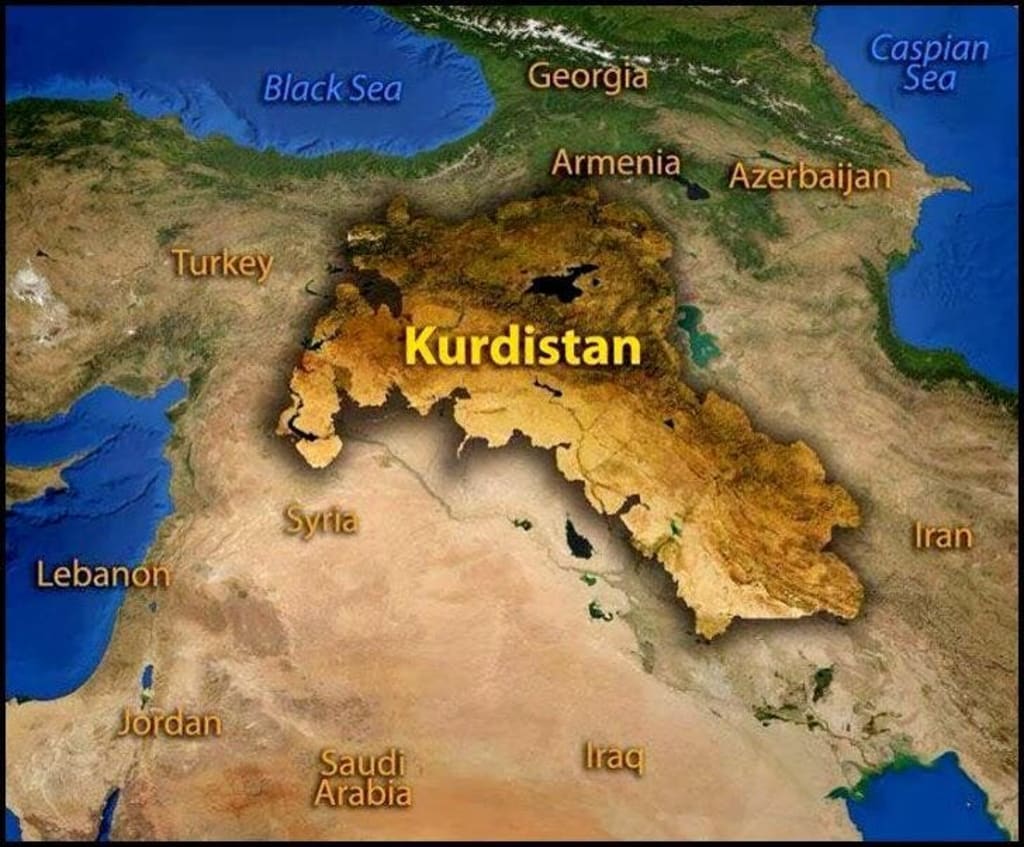
Mahmud al-Kashgari, a geographer from Kashgar in the Kara-Khanid Khanate, created a stylized map in the 11th century that he dubbed "States of the East." This map included the land of the Kurds alongside all of the "races" that were recognized in the East. According to O'Shea (2004), this might be the very first map to include Kurdistan. During the 10th and eleventh hundreds of years, while part of the Middle Easterner caliphate (seventh to 11th hundreds of years), various Kurdish lines the Shaddadids (951-1174, Transcaucasia), Hasanwaydhids (959-1095, Dinawar), Marwanids (990-1096, Diyarbakir) and Annazids (991-1117, Hulwan) - assumed command over their neighborhood matters, however were cleared out by the attacks of the Seljuk Turks in the 11th and twelfth hundreds of years (Hassanpour, 1992).
In the year 1150, the Seljuk king Sanjar made the area of Kurdistan, with the town of Bahar as its capital, and it included regions that are situated in the Kurdish districts of contemporary Iraq and Iran (Kendal, 1996). However, the term "Kurdistan" was first used to refer to a system of Kurdish fiefs in general, not just the Seljuk-designated province, until the sixteenth century.
Except for Kelhor, Erdelan, Baban, Sehrizur, and Mukri, which had either chosen to remain independent of both the Safavid and Ottoman empires or continued to recognize the Ottoman suzerainty, the remaining Kurdish principalities were incorporated into the Ottoman Empire following the Battle of Chaldiran in 1514. The recently vanquished area of Diyarbekir (1515) facilitated all of the procured Kurdish chiefdoms as a trade-off for their affirmation of Ottoman power. From that point forward, a twofold unique pushing all the while towards fracture and unification started to decide the development of Kurdish space and the destiny of Kurdish society.
This dual procedure is not at all novel. As Boris James (2014) has proposed in his examination, Kurds wound up caught by between majestic contentions previously during the middle age time frame, however their endurance as an unmistakable gathering has likewise been ensured by their between royal area. As one can feel it through Ehmed-ê Xani's epopee Mem û Zin, distributed in 1695, the division of Kurdistan between the Persian and Ottoman realms has absolutely made dissatisfaction among certain portions of the Kurdish first class; notwithstanding, one ought to likewise perceive that it didn't frustrate liquid trans-line relations among the Kurds. For instance, the Kurdish prince (mir) Sharaf Khan (1543–1603) struggled with the idea of having dual allegiances to the power brokers in Istanbul and Tehran in order to exert cross-border influence over "his" subjects.
Sultan Selim I (1470–1520) accepted the support of the predominantly Sunni Kurdish chiefs and integrated the Kurdish principalities in eastern Anatolia, resulting in the formalization of the Kurdish principalities. The Skirmish of Chaldiran additionally resolved the limit between the Ottoman and Persian domains and it was formally acknowledged with the marking of the Arrangement of Zuhab (1693) and - in spite of questions and attacks it officially continued until 1914. Between the mid sixteenth and mid nineteenth hundreds of years, the two Ottoman regions that included practically all of Kurdistan, Diyarbekir and Erzurum were monetarily blossoming regions and comprised significant kinds of revenue for the Ottoman focal depository (Yadirgi, 2017).
The nineteenth century was a period of enormous change in Kurdistan. The centralization and Westernization policies initiated by Sultan Mahmut II's reforms and continued by subsequent Ottoman reformers resulted in the demise of the age-old Kurdish administrative structures in the first half of this century.
Mahmut II (r. 1789–1807), Sultan Selim III's successor from 1761 to 1808, was aware that he would need to reform the empire's institutions in order to save it from further decline or collapse. The centralist changes executed by Mahmut II and the succeeding Ottoman rulers involved the concealment of the neighborhood notables all around the realm what's more, occasioned the obliteration of the Kurdish emirates. The Kurdish territories were brought under direct Ottoman control, and the local Kurdish hereditary rulers were removed. At the end of the day, the overturning of the Kurdish nations and the concealment of the financial and landed force of the Kurdish notables remained inseparable. With the disintegration of Kurdish emirates, their constituent parts, ancestral confederations and clans (a¸sirets) turned into the main political and social parts in Kurdistan. During the centralization and Westernization period, the Ottoman Realm felt one of the best dangers from its aggressive northern neighbor, Russia, which entered eastern Anatolia to the extent that Erzurum in 1829. Kars, Erzurum and Bayazid were undeniably gotten back to the Ottomans under the terms of the Settlement of Edirne (1829), however the conflict had struck a totally new note of risk as not just had the Ottoman Armenians helped the Russian catch of Kars, however Muslim Kurdish clans had likewise given a regiment against the ruler. Such dangers from Russia and the clever partnerships between the Kurds and the Russians had additionally been compelling in illuminating the approaches of the Hamidian time frame.
The politically coordinated Kurdish rulers were neither independent nor did they demand independence from the focal state, in light of the fact that the nature and the upkeep of their influence and abundance were grounded in the help given by the Ottoman state. This helps to explain why, in contrast to the Ottoman Kurds, the clientele of the Kurdish elite in Kurdistan were extremely hostile to the 1908 Revolution (McDowall, 2004: 95–6). Following WWI, when the guide of the Center East was being redrawn, these factions inside the Kurdish society forestalled the rise of an initiative that could fill a job similar to that held by the Hashemite emirs in the Hejaz in the rise of the Middle Easterner public development and the advancement of Middle Easterner patriotism during and after the Incredible Conflict.






Comments
There are no comments for this story
Be the first to respond and start the conversation.